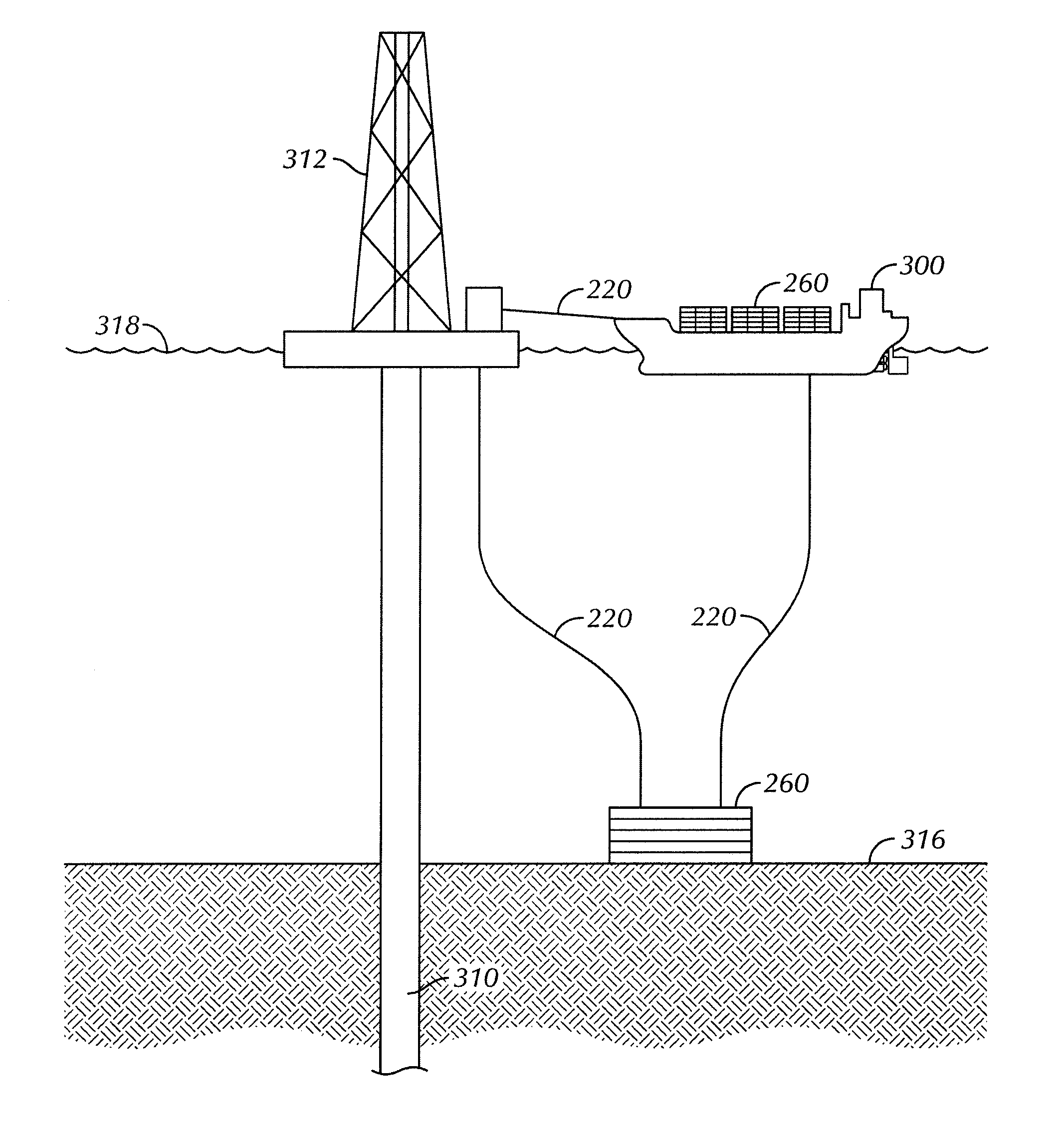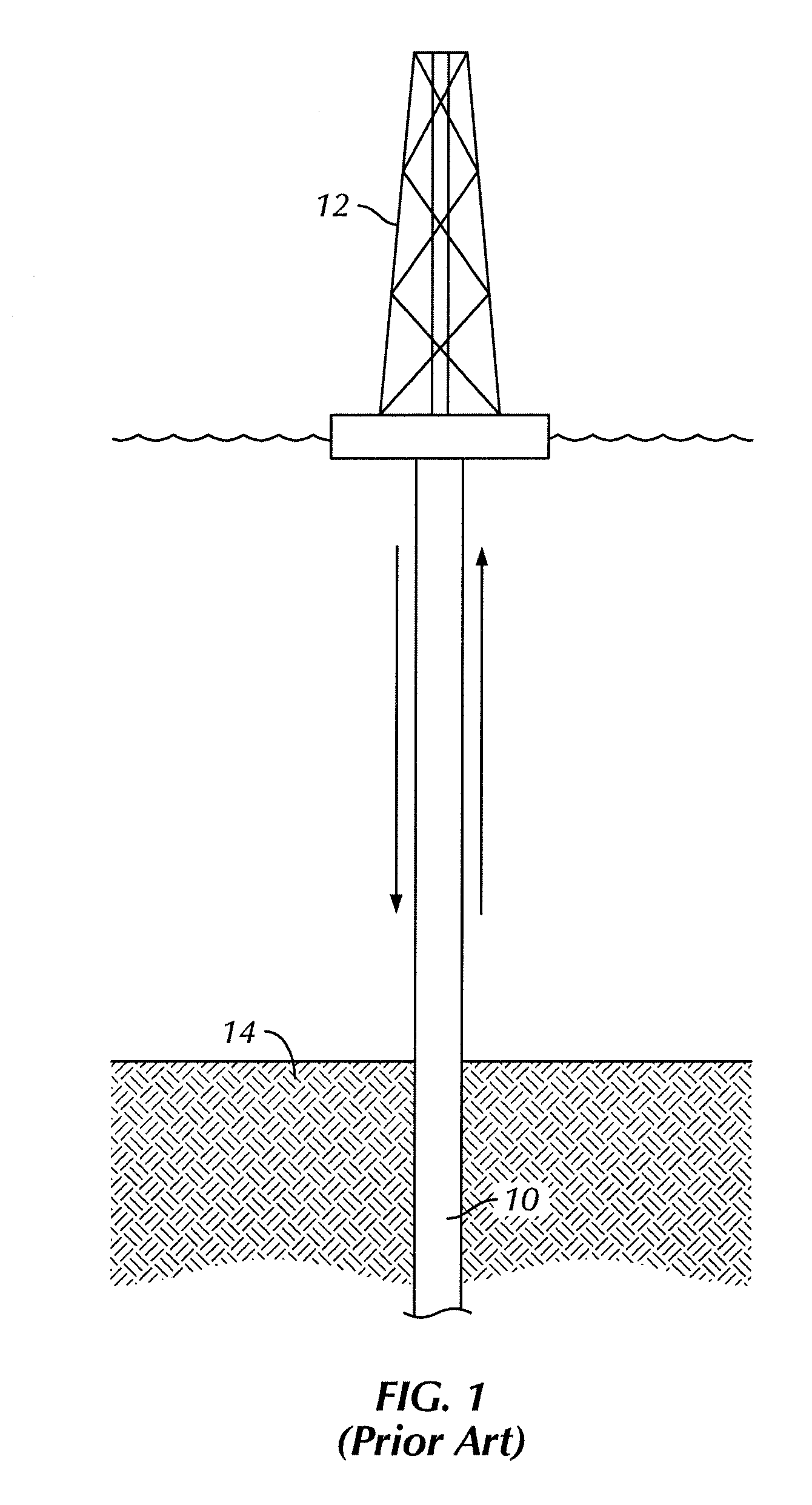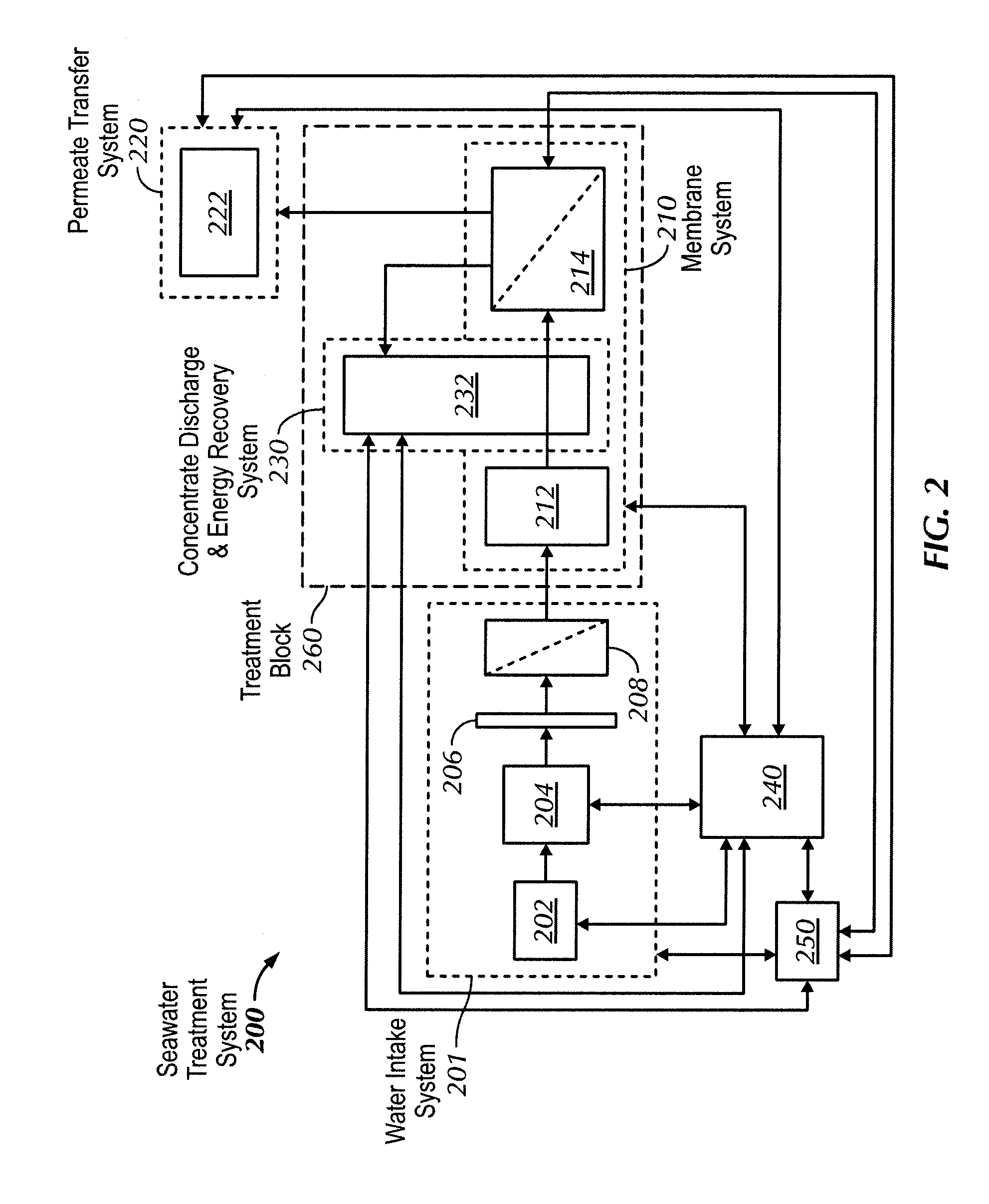Method and apparatus for dynamic, variable-pressure, customizable, membrane-based water treatment for use in improved hydrocarbon recovery operations
a technology of dynamic and variable pressure, applied in the direction of multi-stage water/sewage treatment, separation process, treatment water, etc., can solve the problems of reducing the permeability of the reservoir, reducing the amount or quality of the hydrocarbon product produced from the production well, and difficulty in some locations in disposing of produced water offshor
- Summary
- Abstract
- Description
- Claims
- Application Information
AI Technical Summary
Benefits of technology
Problems solved by technology
Method used
Image
Examples
example 1
[0101]A first set of 3 samples of pretreated open intake seawater were fed separately to three RO membranes. The temperature of the water was 18° C. The flux used was 14.5 LMH (8.56 GFD), which is typical for MF / UF pretreated open intake seawater. Recovery used was 40%, which is typical for SWRO. Table 1 shows the results for the first set of 3 samples:
TABLE 1Results for the first set of 3 seawater samplesDowHydranauticsKochRO MembraneSW3OULE-400iSWC68040-HF-400Feed Pressure49.43bar48.9bar52.2barConcentrate Pressure47.37bar47.3bar51.3barPermeate TDS218mg / L264mg / L258mg / LPermeate SO41.74mg / L5.3mg / L3.6mg / L
example 2
[0102]A second set of 3 samples of pretreated open intake seawater were fed separately to the same three RO membranes as used in Example 1. The temperature of the water was 25° C. The flux and recovery used was the same as in Example 1 (i.e., the flux was 14.5 LMH and the recovery was 40%) Table 2 shows the results for the second set of 3 samples:
TABLE 2Results for the second set of 3 seawater samplesDowHydranauticsKochRO MembraneSW3OULE-400iSWC68040-HF-400Feed Pressure48.03bar47.6bar50.0barConcentrate Pressure46.5bar46.0bar49.1barPermeate TDS353mg / L341mg / L360mg / LPermeate SO42.85mg / L6.9mg / L5.1mg / L
example 3
[0103]A third set of 3 samples of pretreated open intake seawater were fed separately to the same three RO membranes as used in Examples 1 and 2. The temperature of the water was 31° C. The flux and recovery used was the same as in Examples 1 and 2 (i.e., the flux was 14.5 LMH and the recovery was 40%). Table 3 shows the results for the third set of 3 samples:
TABLE 3Results for the third set of 3 seawater samplesDowHydranauticsKochRO MembraneSW3OULE-400iSWC68040-HF-400Feed Pressure47.32bar47.2bar48.8barConcentrate Pressure45.94bar45.6bar48.0barPermeate TDS522mg / L413mg / L479mg / LPermeate SO44.25mg / L8.3mg / L282mg / L
[0104]The following examples were used to combine an RO system with an NF system.
[0105]First, as shown in Example 4, the limits of the NF system had to be determined. This is because typical standard NF elements can be operated at higher recovery and flux compared to SWRO, for example, the flux may be approximately 17.0 LMH (about 10 GFP or higher) and the recovery may be appro...
PUM
| Property | Measurement | Unit |
|---|---|---|
| pressure | aaaaa | aaaaa |
| pressure | aaaaa | aaaaa |
| pressure | aaaaa | aaaaa |
Abstract
Description
Claims
Application Information
 Login to View More
Login to View More - R&D
- Intellectual Property
- Life Sciences
- Materials
- Tech Scout
- Unparalleled Data Quality
- Higher Quality Content
- 60% Fewer Hallucinations
Browse by: Latest US Patents, China's latest patents, Technical Efficacy Thesaurus, Application Domain, Technology Topic, Popular Technical Reports.
© 2025 PatSnap. All rights reserved.Legal|Privacy policy|Modern Slavery Act Transparency Statement|Sitemap|About US| Contact US: help@patsnap.com



